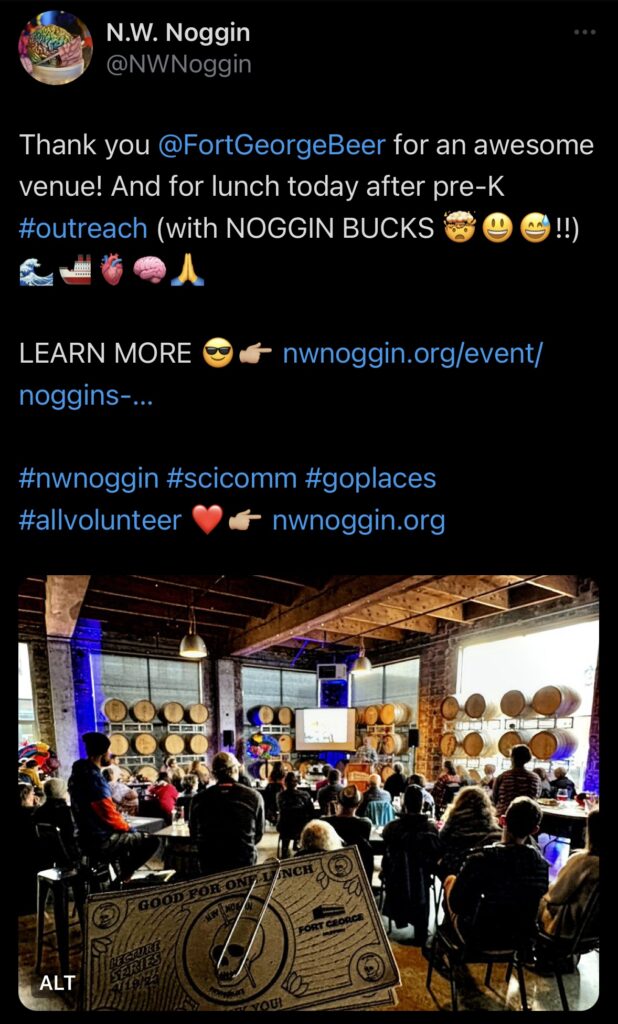
“If you want to find the secrets of the universe, think in terms of energy, frequency and vibration.”
– Nikola Tesla
We are immersed in waves!
The world is full of energy, and much of it can be described and measured as waves.
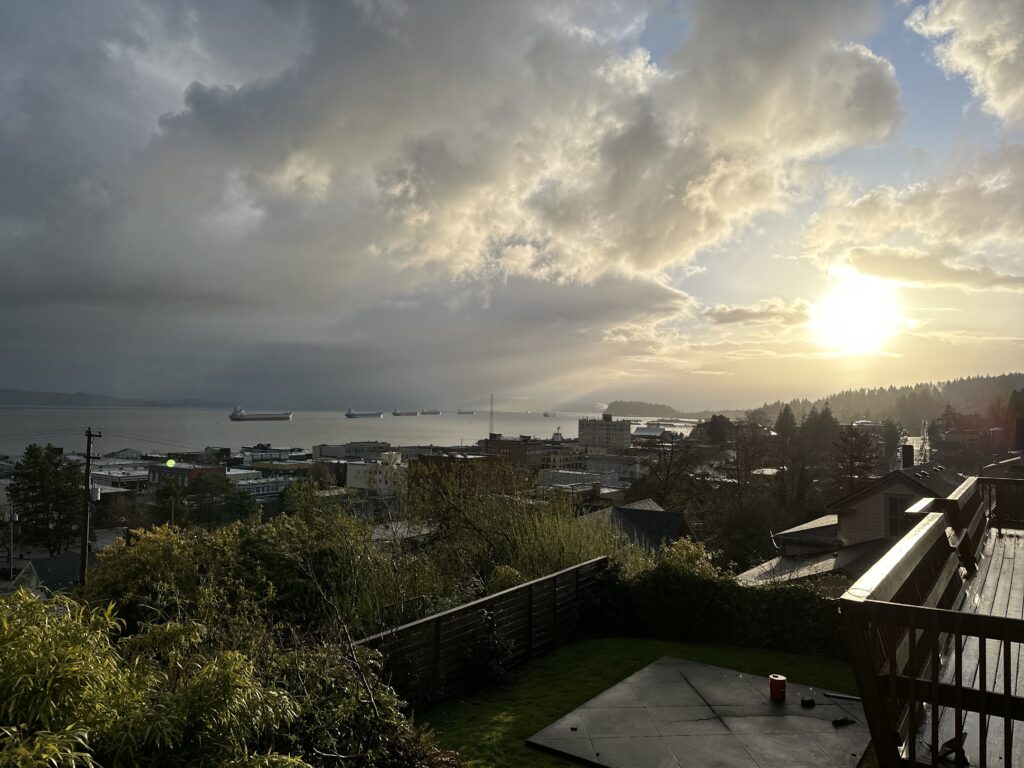
In Astoria this week, at the turbulent mouth of the Columbia River, our hearts kept a beat through the frequent hailstorms, squalls and downpours of a North Coast Oregon spring.
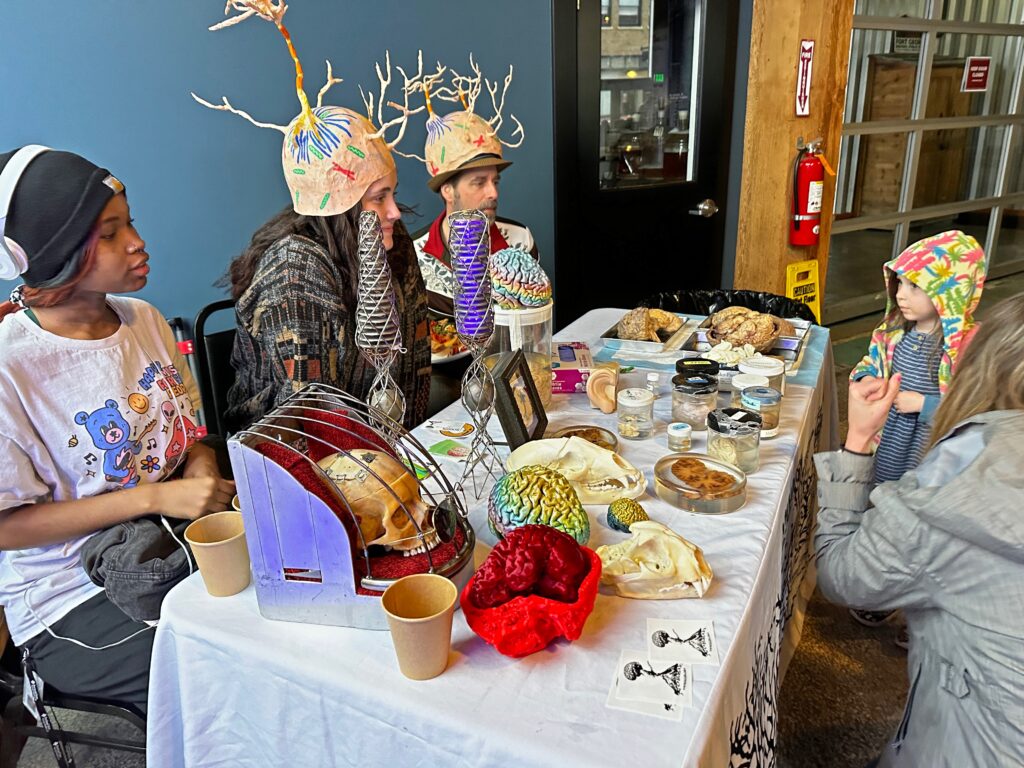
As we spoke, we were buffeted by complex whorls and eddies of air, which carried the pressure changes and frequencies of our vibrating larynxes and pharynxes. We selectively plucked meaningful signals from these roiling vortices, converting them into the equally wave-like language of electrochemical activity in the synapsed networks of billions of cells in our brains.
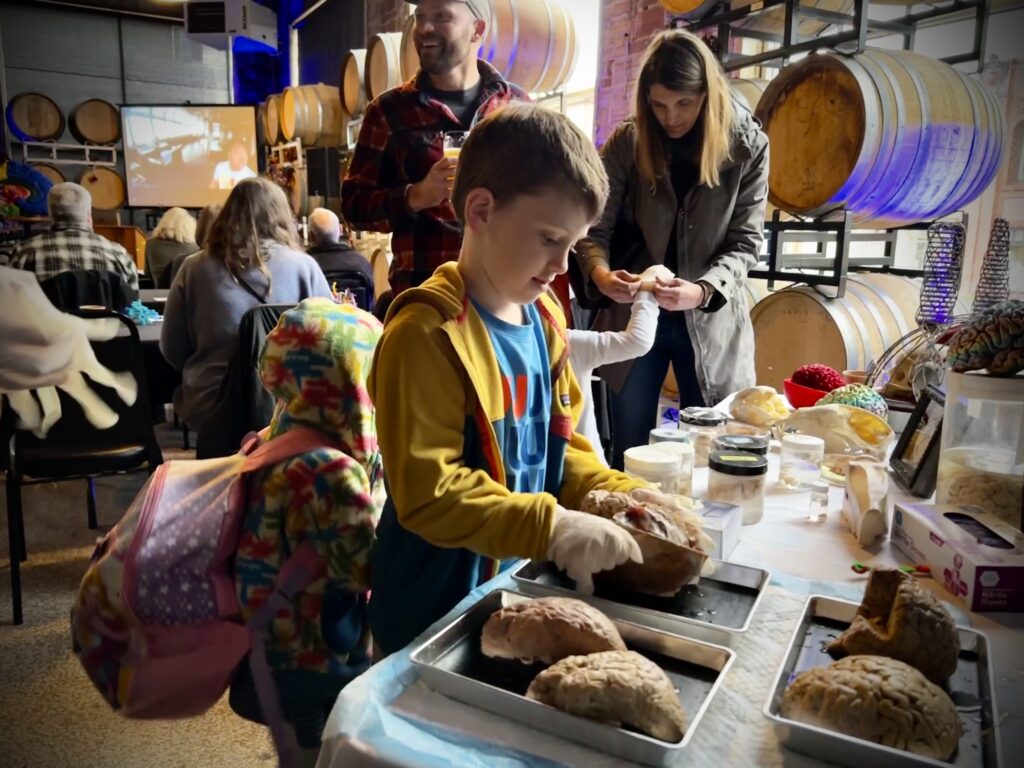
Each of us, because of our own unique developmental histories, has constructed these individualized webs of linked brain cells – both neurons and glia – that direct this energy, making lots of assumptions about what to expect, and what’s out there, biasing us towards the detection of specific signals that we’ve found important and relevant, while the rest becomes discarded as noise.
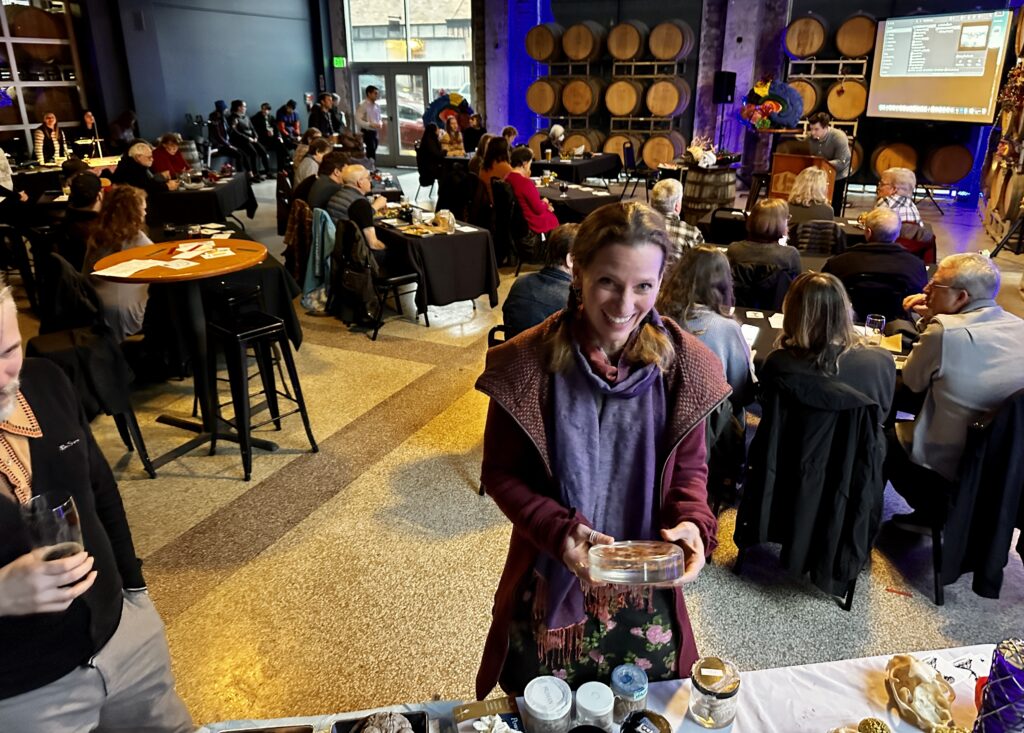
Through Northwest Noggin we GO PLACES where our own biased expectations are routinely challenged, where our brain networks need adjustment, and where we don’t grasp all the signals that others do. We want to hear from more people, change our brains and learn!
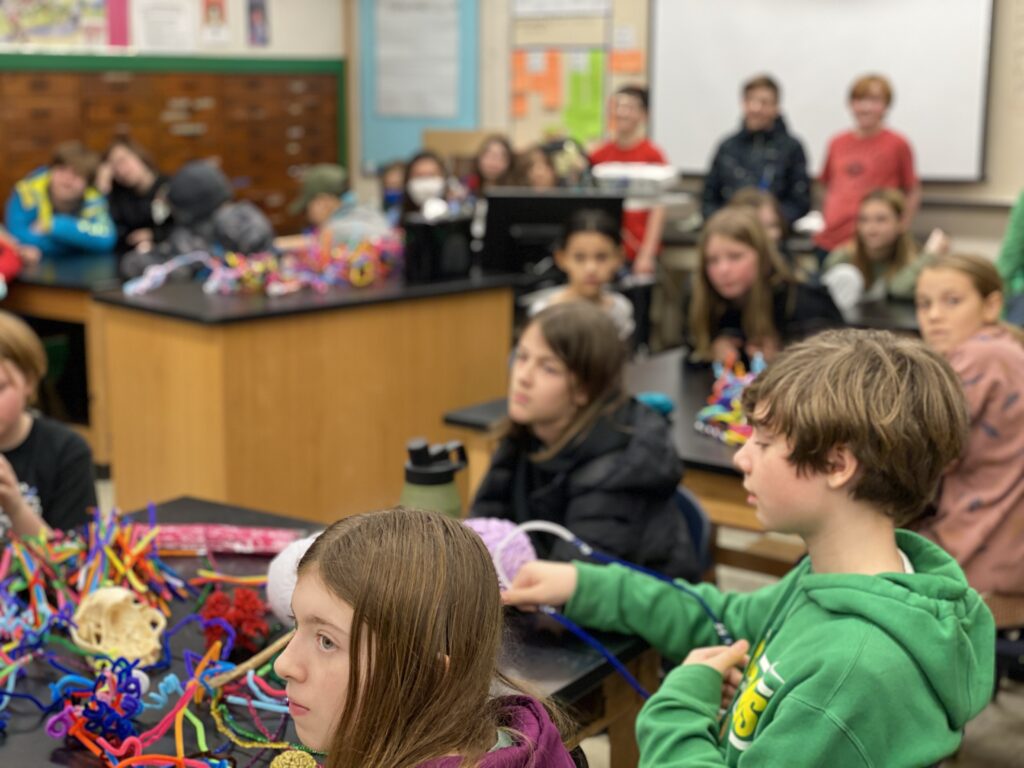
This is often in marked contrast to more siloed signal detection specialists, including some in academia (particularly those who don’t teach), who might prefer to curate and amplify their own comfortable and familiar signal environments, and mostly hire and talk to others with similar backgrounds and training.
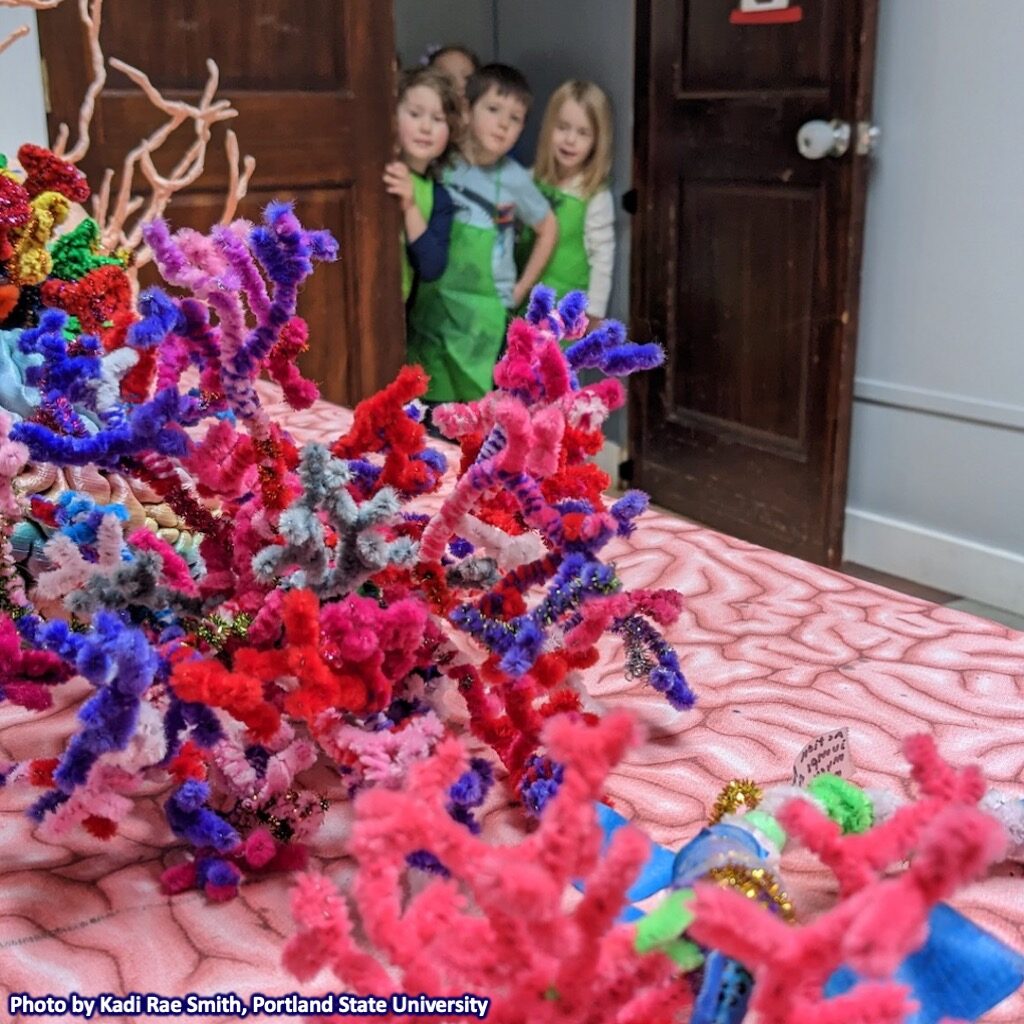
We’ve found tremendous value in exploring the “noise” by traveling, listening to different perspectives, hearing from young people, sharing stories where relevant and taking an interdisciplinary approach to fascinating and compelling ideas like waves.
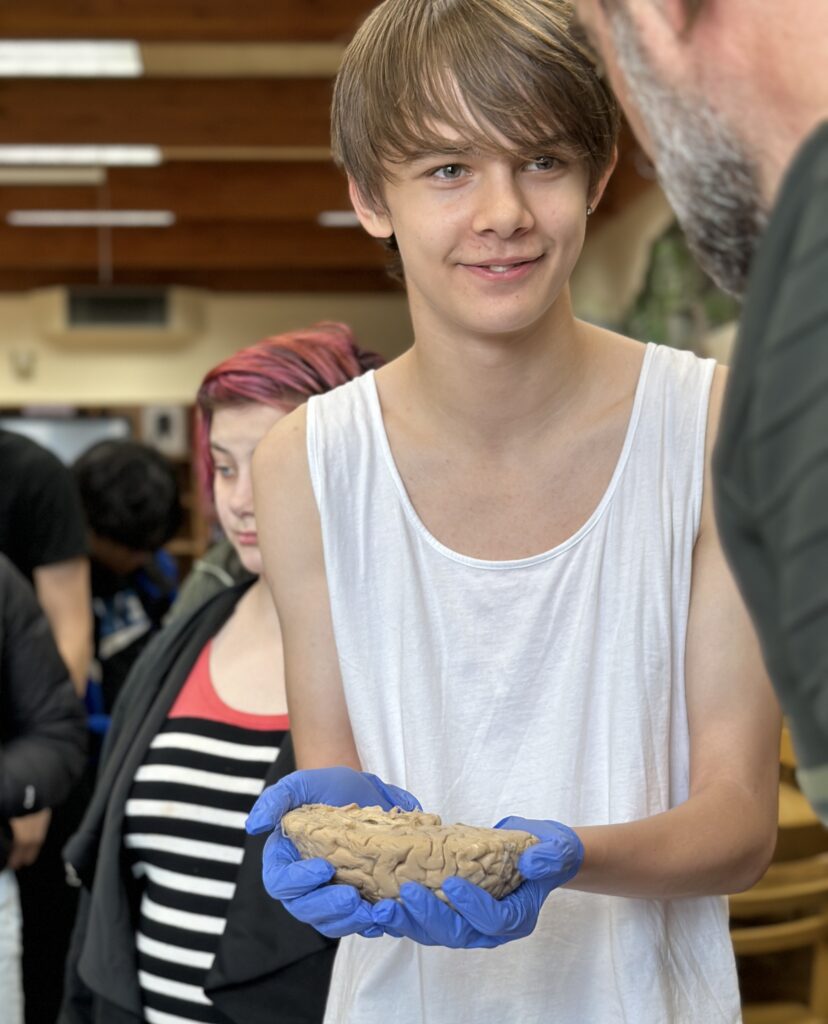
One person’s noise is often another’s meaningful and valuable signal.
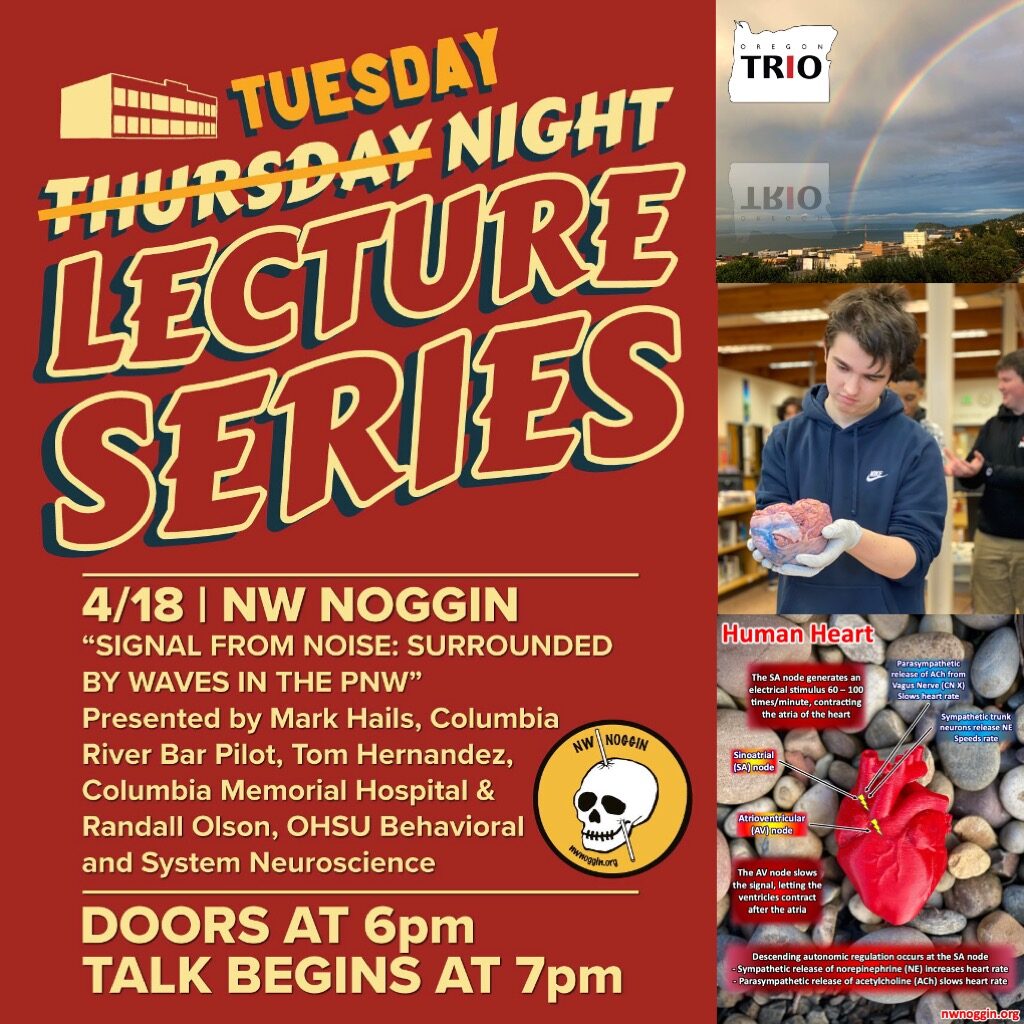
Rivers, Hearts and Brains at the Fort!
This week we gathered on a stormy evening in the Lovell Room at the legendary Fort George Brewery in Astoria, Oregon to talk about waves.
We were thrilled to introduce three accomplished and remarkable speakers, each skilled in extracting essential signals from the noisy swells.
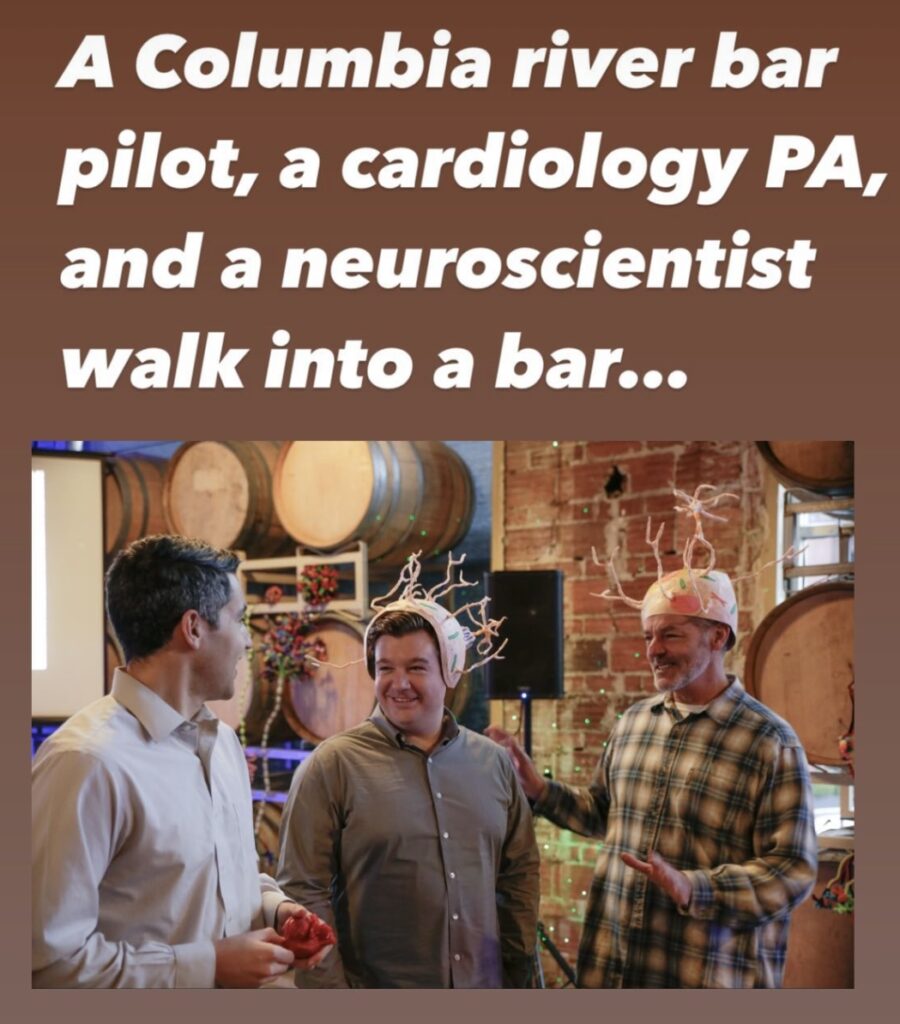
Their packed presentation kicked off a week of all-volunteer Northwest Noggin interdisciplinary neuroscience outreach in local pre-K’s and public high schools.
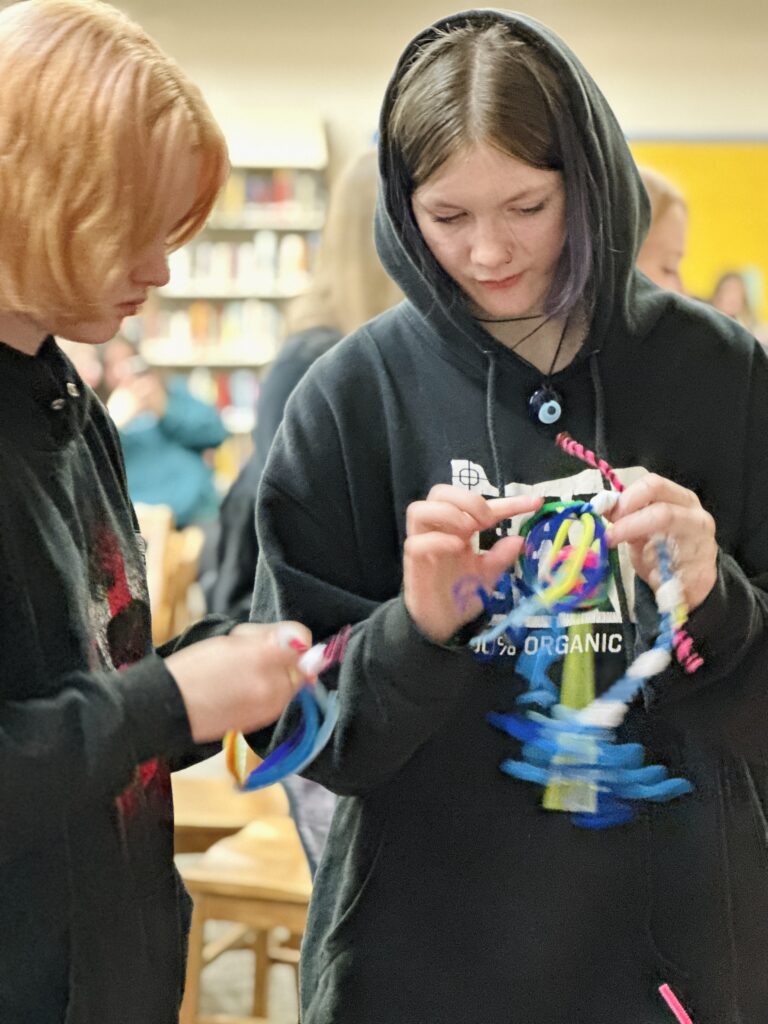
LEARN MORE: Pre-K, Fish and Logger Lobes!
We heard from Mark Hails, a Columbia River bar pilot, who knows what matters about the complex topography of the river’s mouth, and which signals permit safe navigation around the infamous bar. We also heard from Tom Hernandez, a PA cardiologist at Columbia Memorial Hospital, who taught us how to appreciate – and measure! – an important blood-borne wave that tells us something about health and disease. And Randall Olson, a current graduate student in Behavioral and Systems Neuroscience at OHSU, dove right into the waves that form our conscious experience and perception.
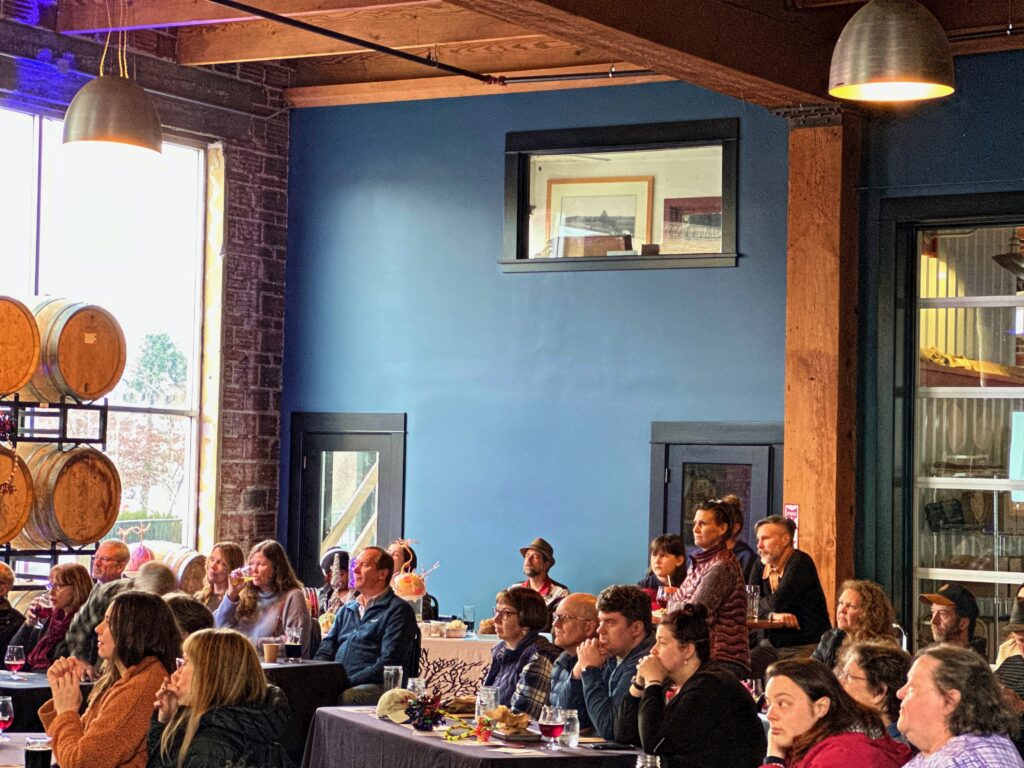
From Captain Mark Hails, Bar Pilot
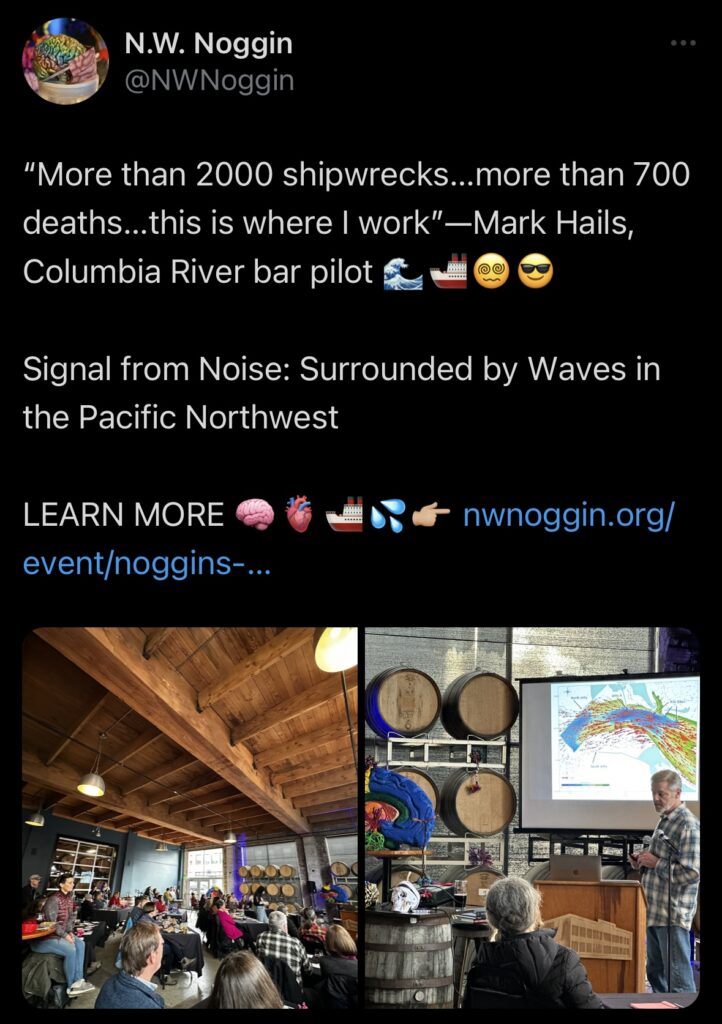
The Columbia Bar is at the mouth of the Columbia River spanning Oregon and Washington.
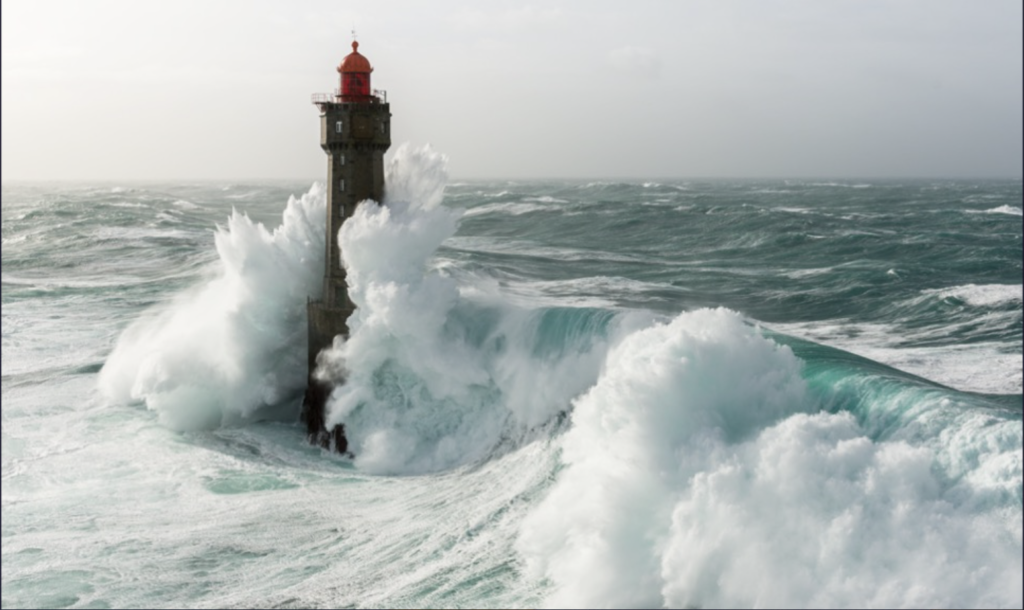
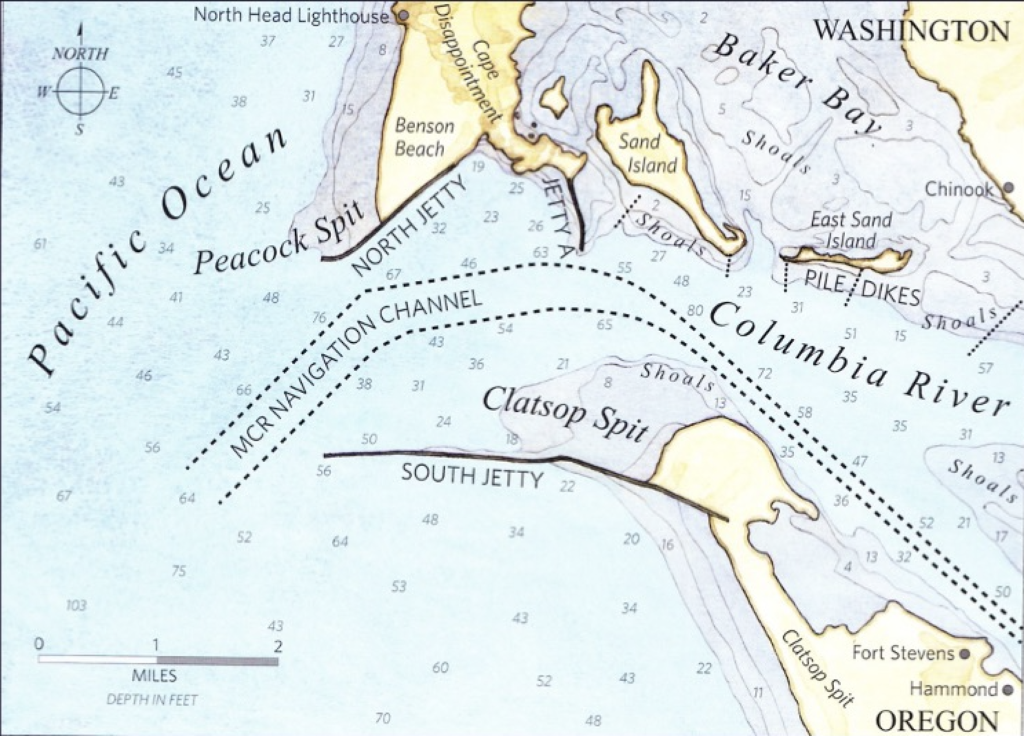
LEARN MORE: The Columbia River Basin
It is one of the most dangerous bar crossings in the world, earning it the nickname “Graveyard of the Pacific.”
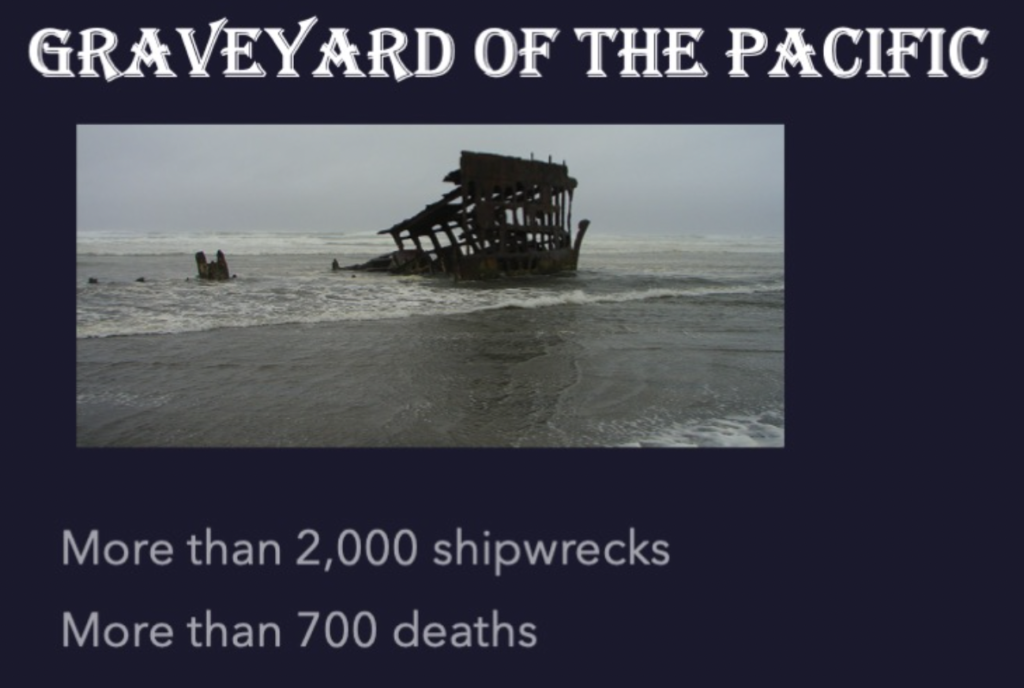
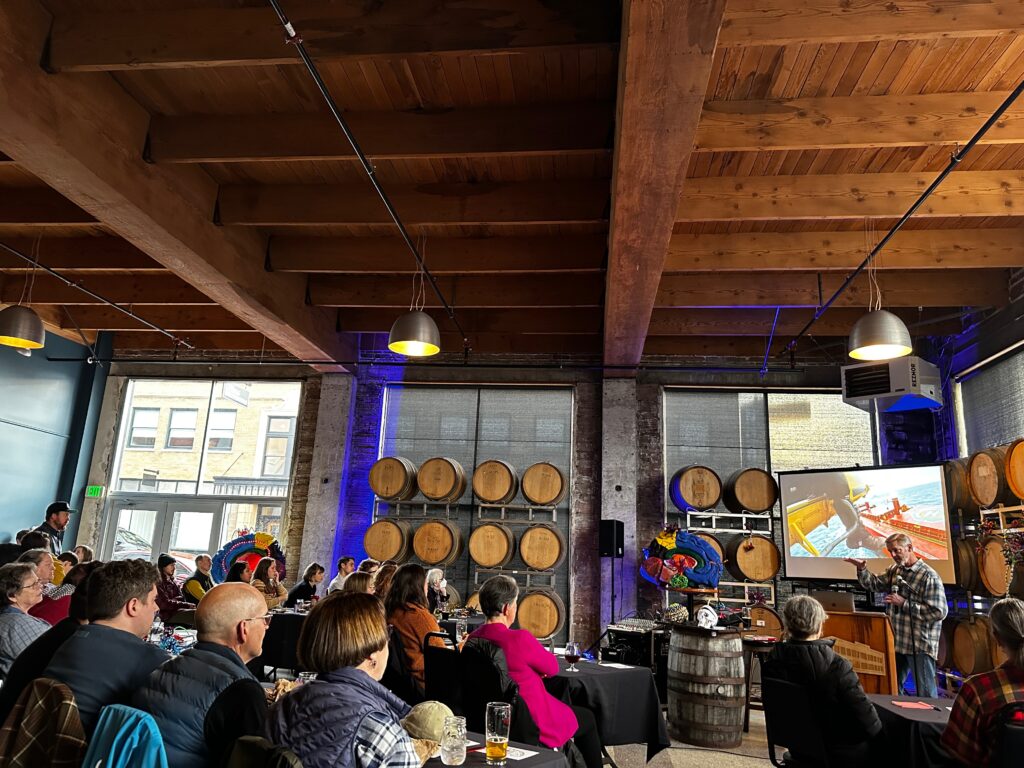
LEARN MORE: Graveyard of the Pacific
LEARN MORE: Discovering shipwrecks: Diving into the Graveyard of the Pacific
The bar is about 3 miles wide and 6 miles long, where the river’s current dissipates into the Pacific Ocean. The Columbia’s ebb current can be as strong as 7 knots westward, and when encountering the predominantly westerly winds and ocean swells, the two forces essentially collide, and the waves and swell become steeper and taller.

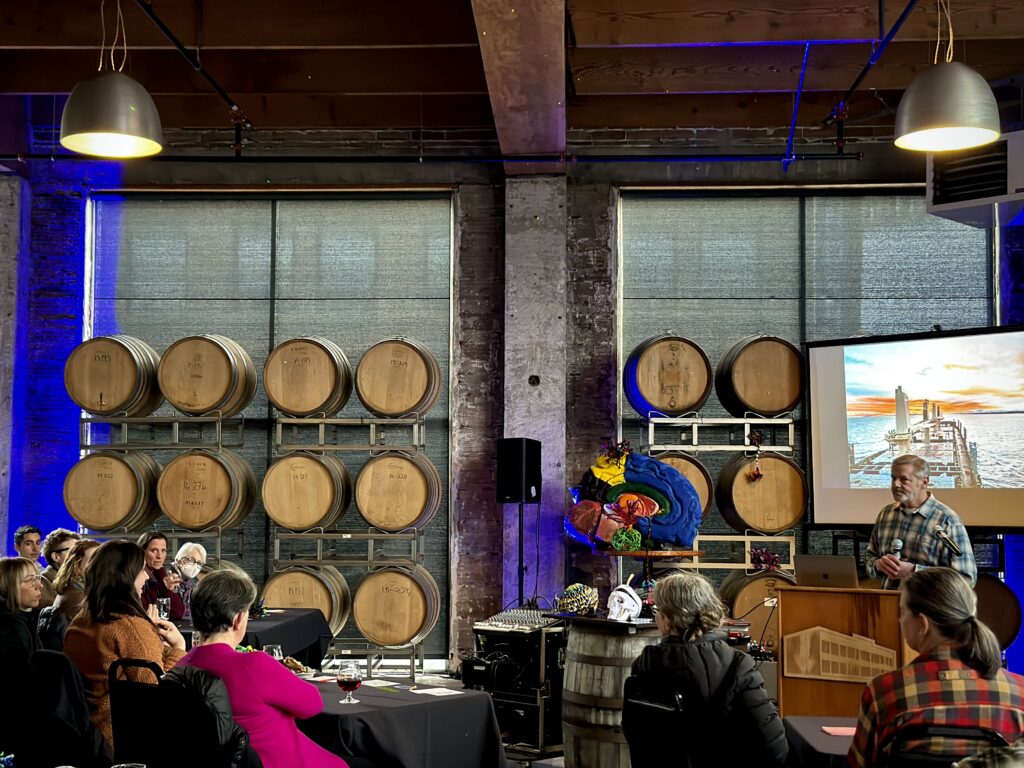
Unlike other major rivers, the current is focused “like a fire hose” without the moderating effect of a river delta.
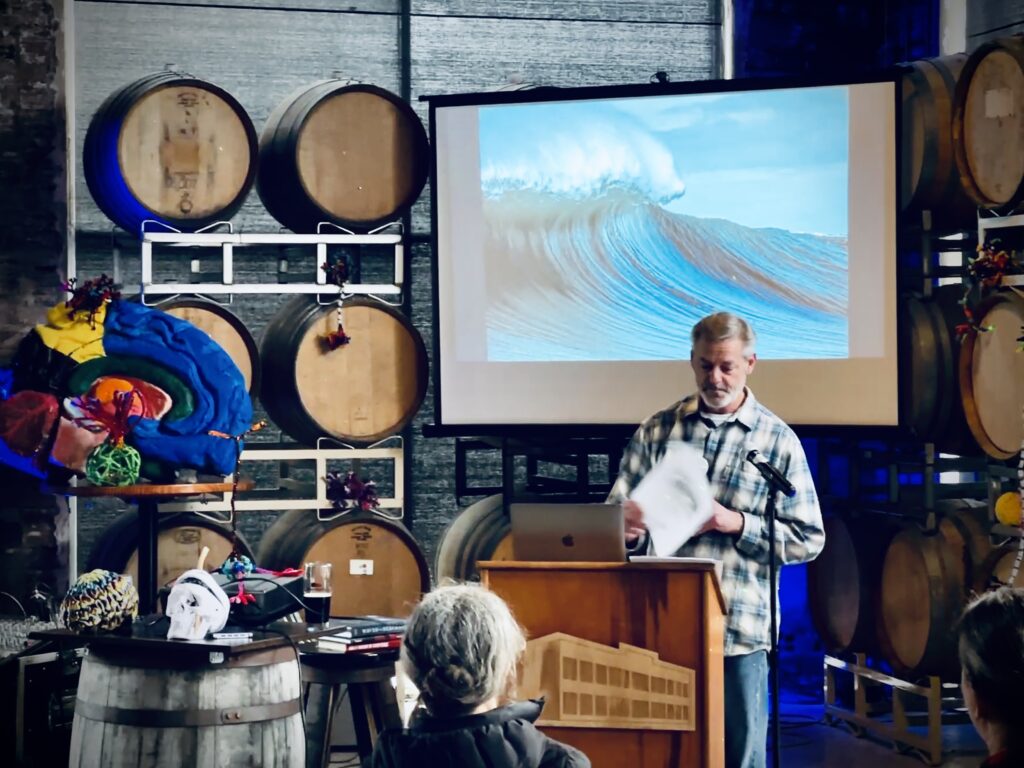
As a Bar Pilot (a local expert mariner) I must analyze several critical pieces of information to safely navigate this stretch of the river.

These signals include swell and sea height and direction, swell period, current (flood or ebb), wind speed and direction. I also need to be aware of approaching storm systems!
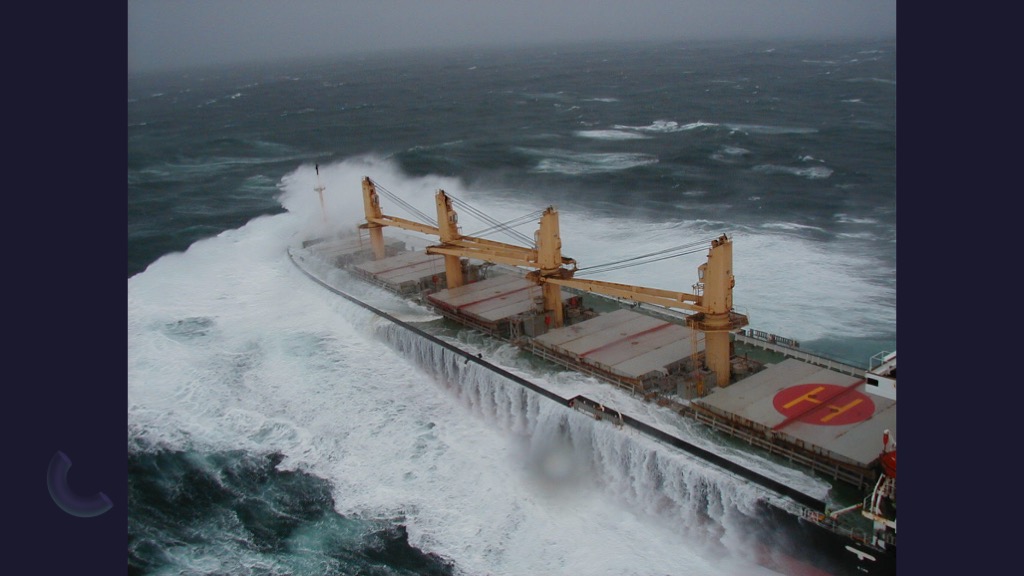

LEARN MORE: Columbia River Bar Pilots
For my job I pull the essential signals from all the noise to be confident the waves we will transit upon will be safe for the vessel.
From Tom Hernandez, Cardiologist PA, Columbia Memorial Hospital
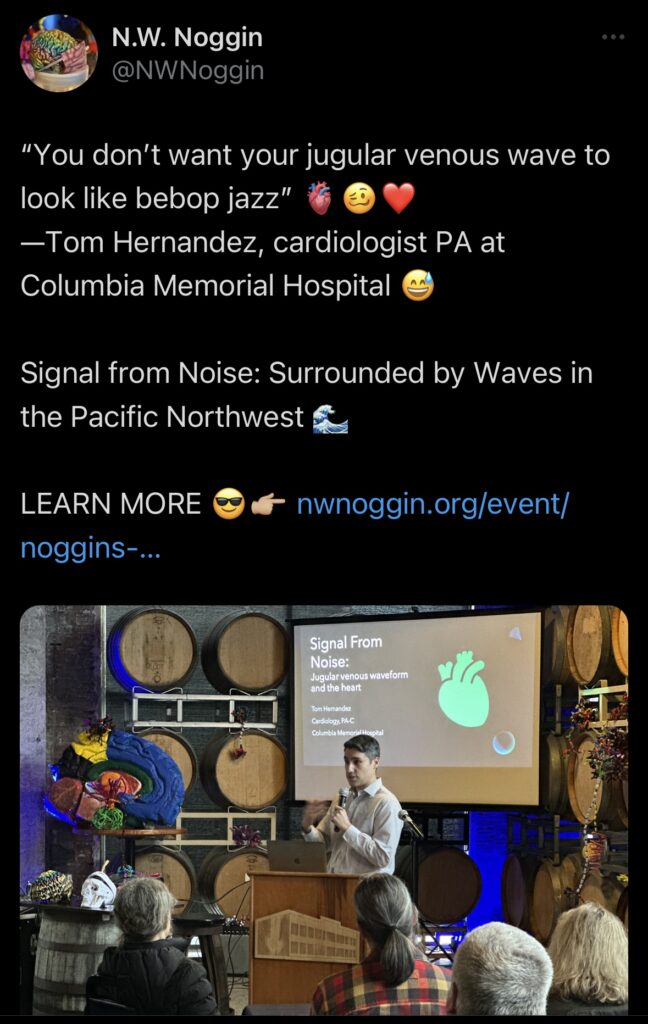
My presentation looked at the wave observed in the jugular vein at the neck which reflects heart pressure and function.
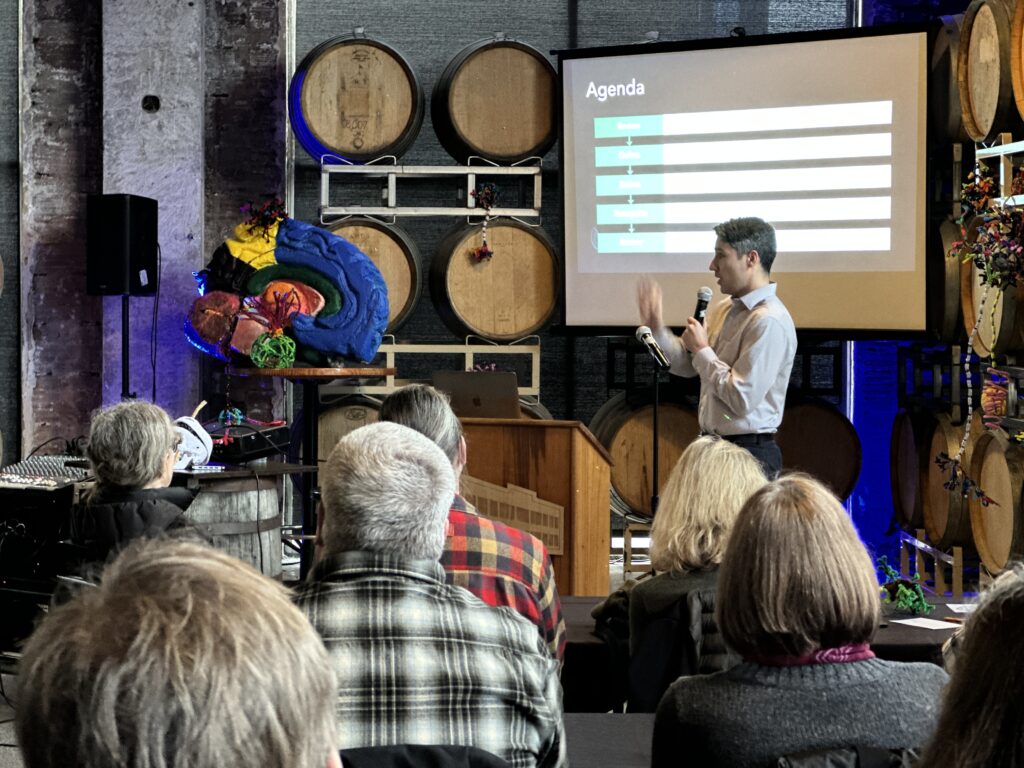
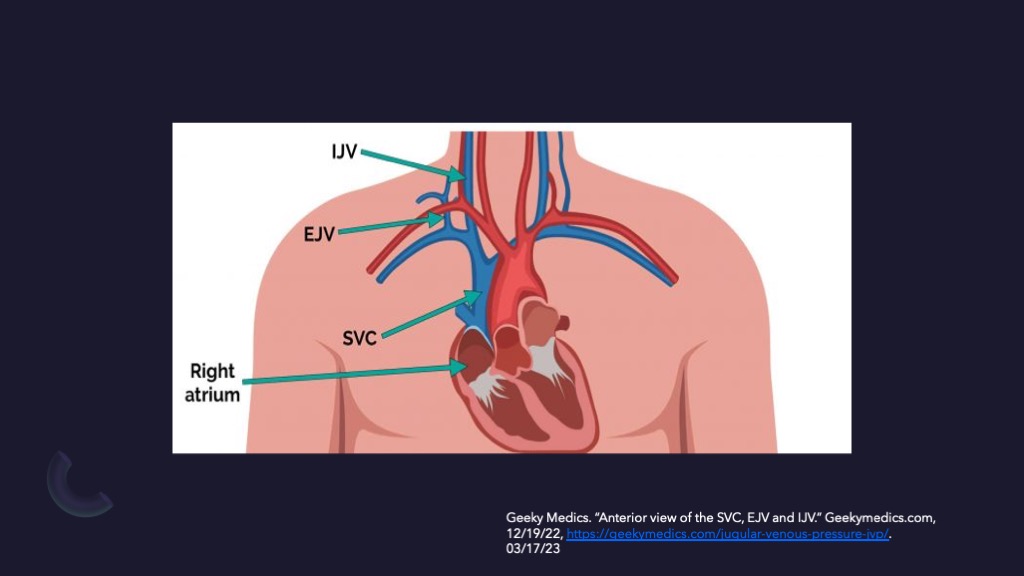
The wave is generated by the internal jugular vein (or IJV) which carries deoxygenated blood from the brain. The IJV transports this blood directly through the superior vena cava (SVC) into the right atrium of the heart without any interfering valves along the way.
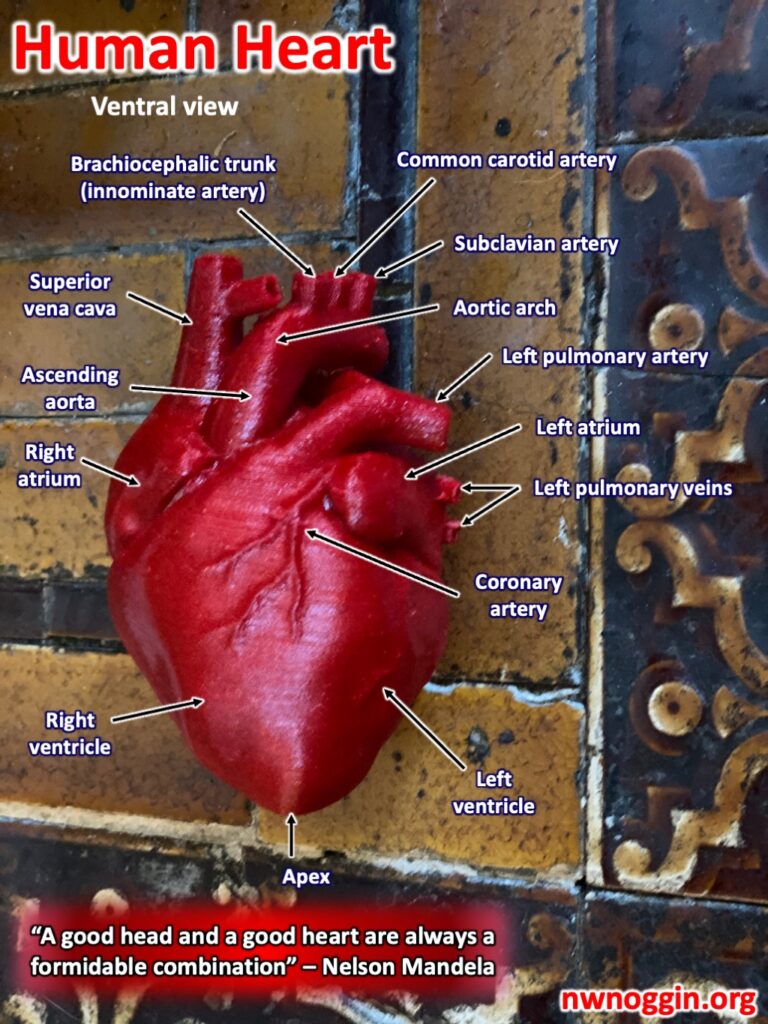
(Valves? Or are they vascular jetties?).
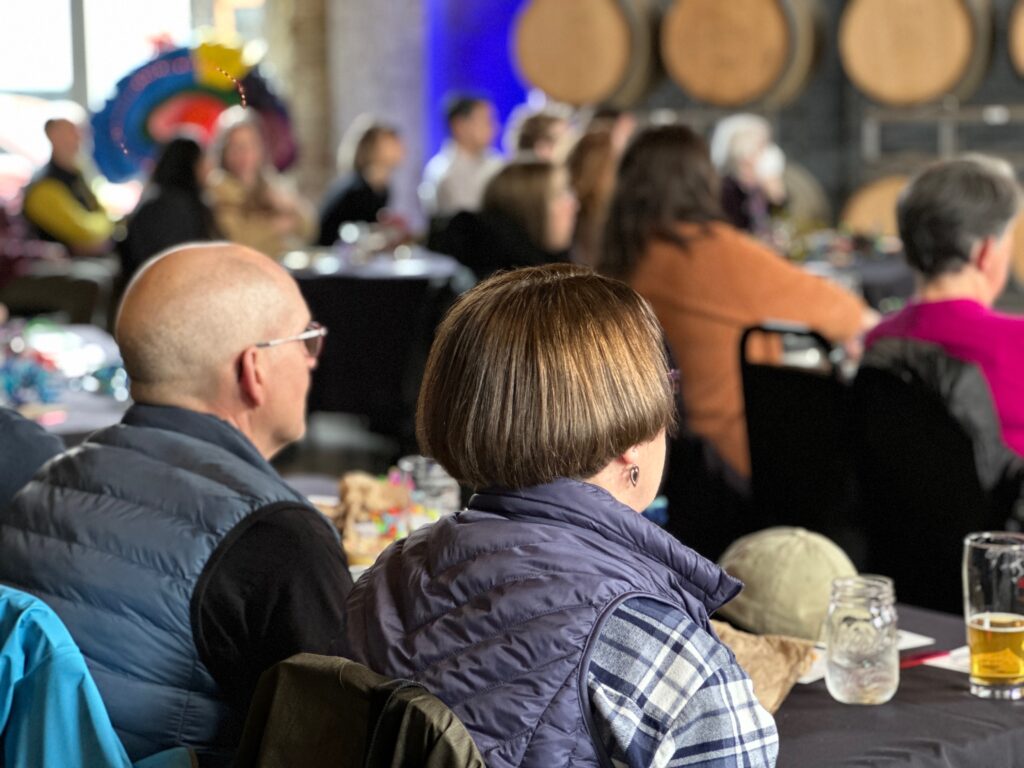
This continuity of blood flow – the fact that our jugular vein to right atrium forms one continuous tube – means that any changes in pressure in the right atrium of our heart can be seen in our neck above the jugular vein!
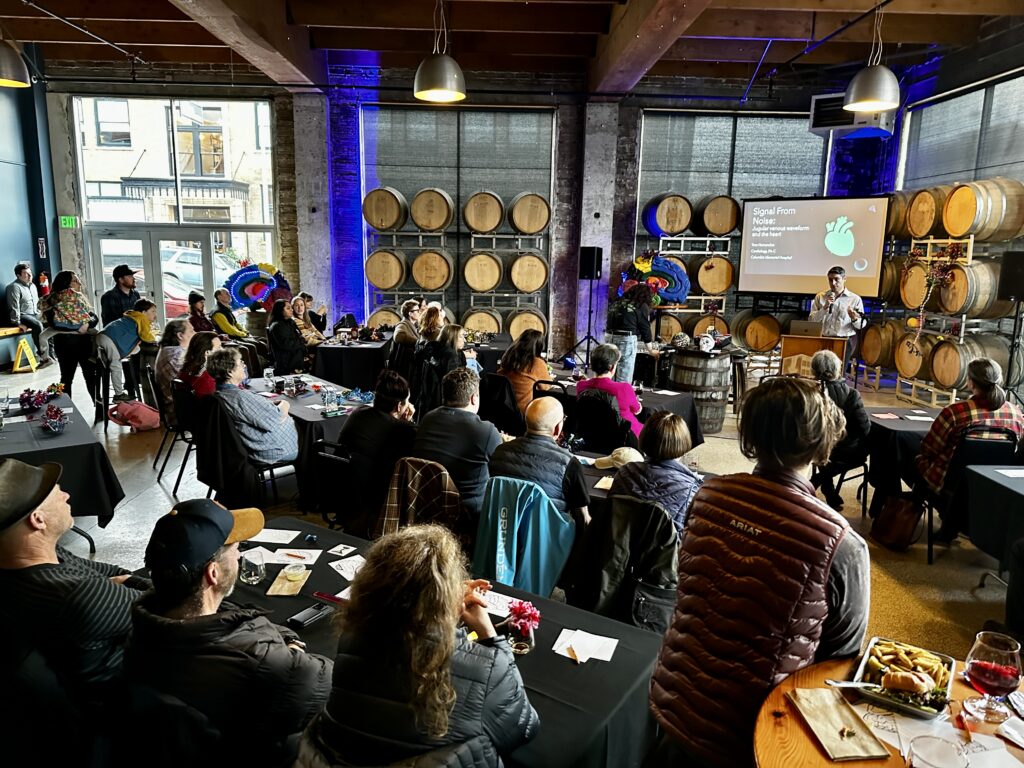
And these pressure waves can help with diagnosis. We reviewed the different components of the jugular venous waveform in physiologic and pathophysiologic states.
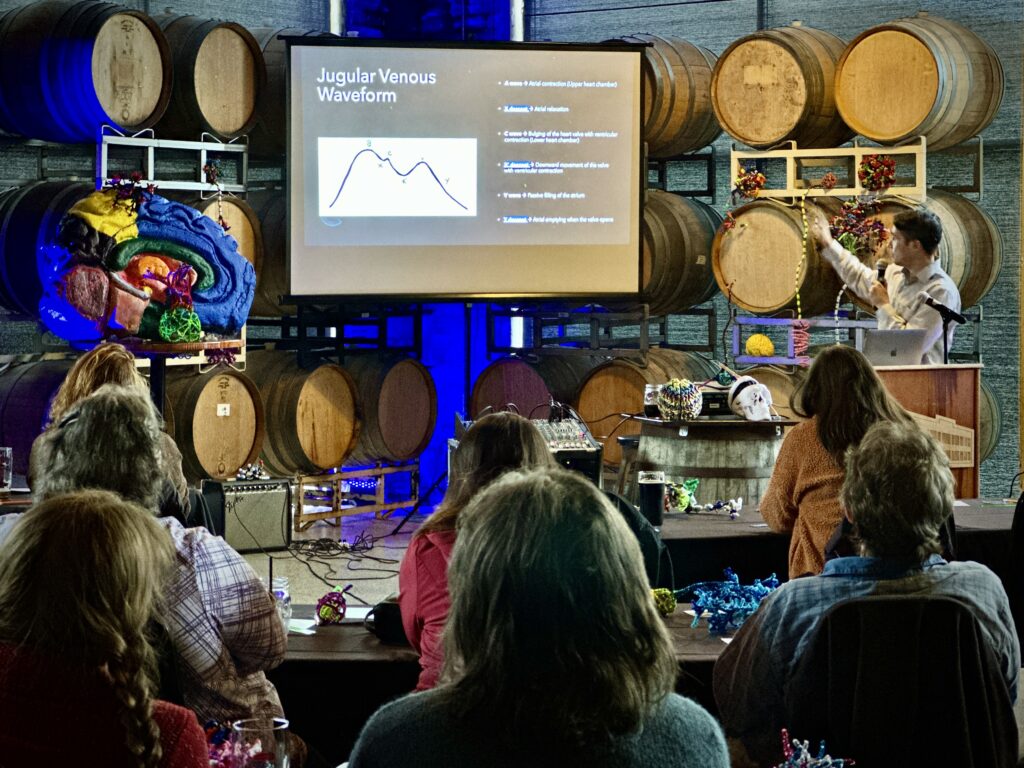
LEARN MORE: The jugular venous pressure revisited
LEARN MORE: Physiology, Jugular Venous Pulsation (NIH)
LEARN MORE: Understanding basic vein physiology and venous blood pressure through simple physical assessments
I ended with a review of how cardiologists can accurately estimate the pressure in the heart based on that jugular venous pulsation. Audience members used rulers to measure their own currents of wave-like flow!
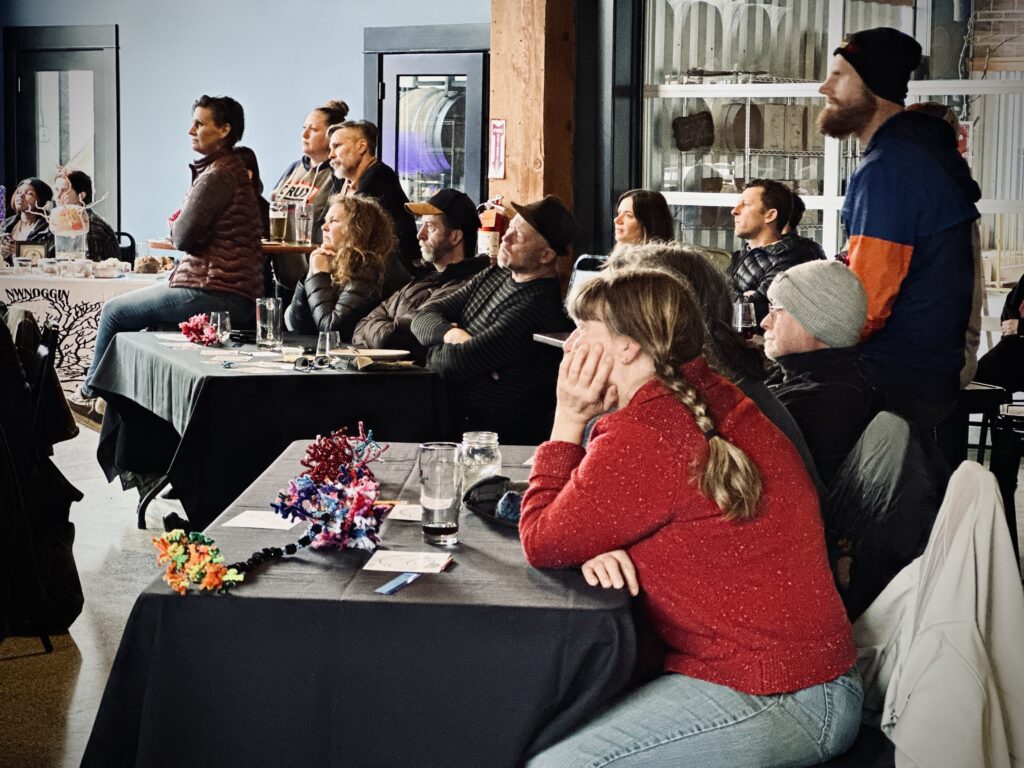
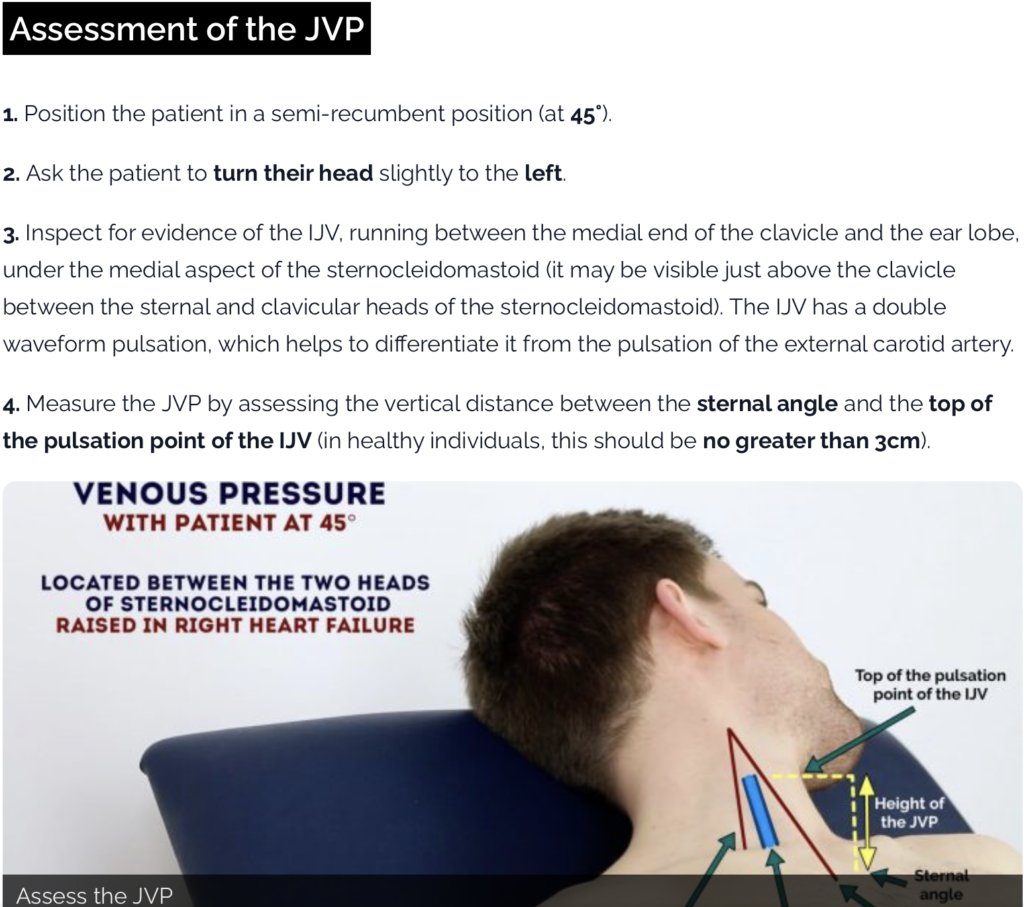
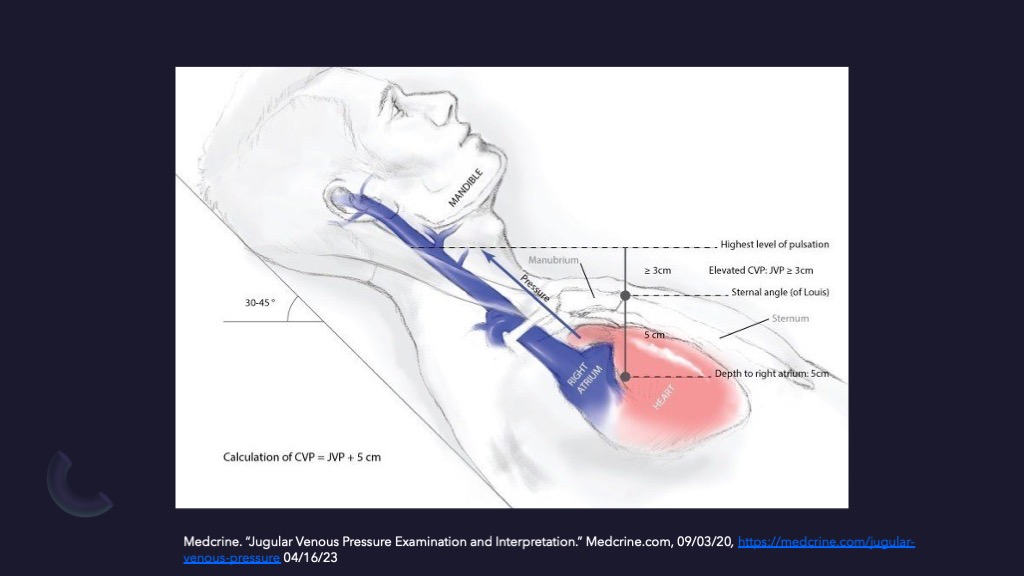
LEARN MORE: How do we assess the Jugular Venous Pressure (JVP)?
From Randall Olson, Graduate Student in Behavioral & Systems Neuroscience, OHSU
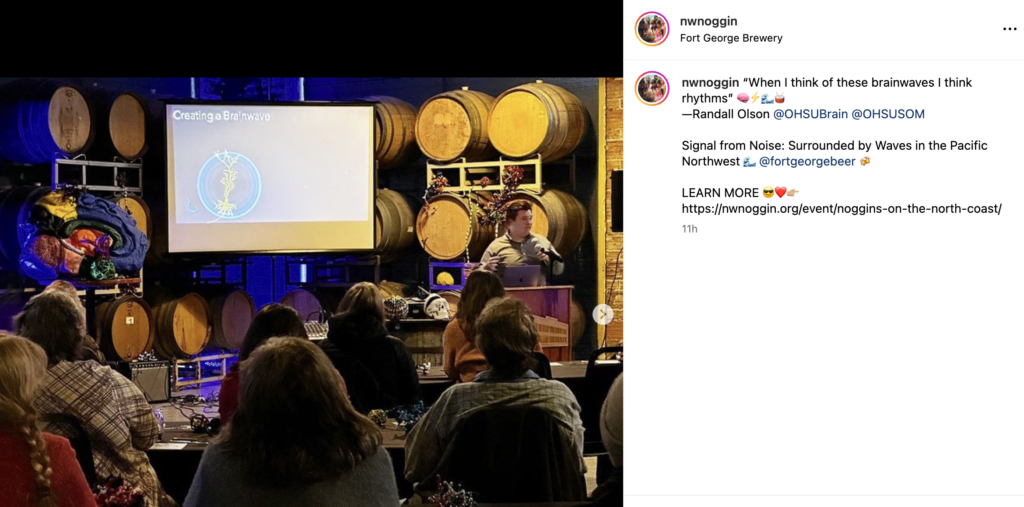
Waves permeate the entirety of our existence, from the physical waves of the ocean to the rhythmic pulsing in our hearts, to the electromagnetic cacophony of waves in our brain.
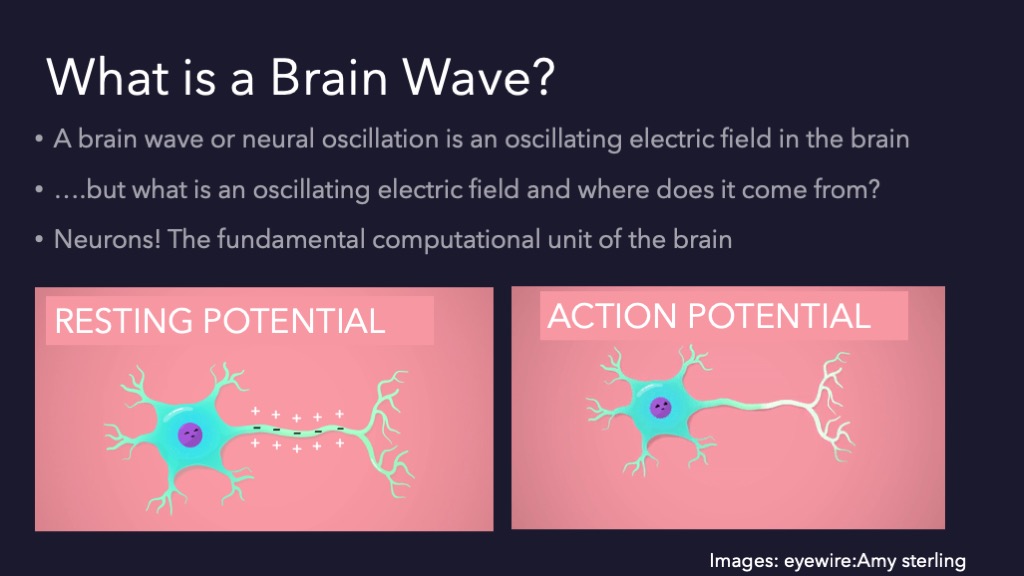
LEARN MORE: The origin of extracellular fields and currents — EEG, ECoG, LFP and spikes
Brain waves or brain rhythms emerge from billions of neurons firing in synchrony and are thought to correlate, or even partially cause, certain cognitive processes and behavioral states.
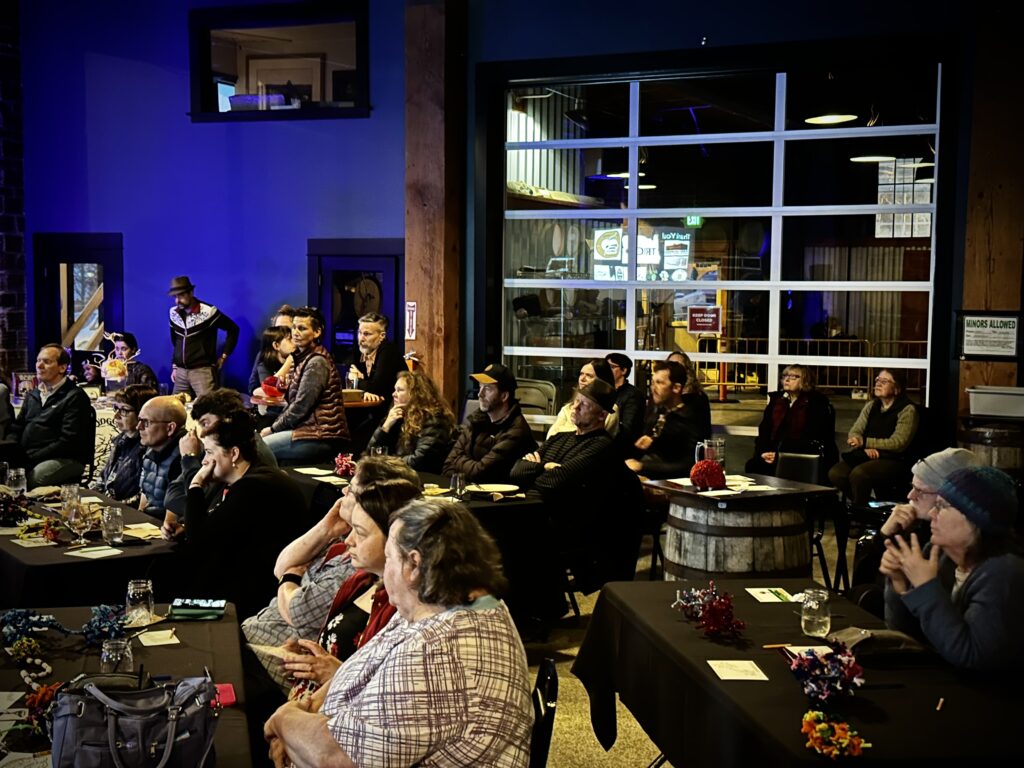
“Clocks tick, bridges and skyscrapers vibrate, neuronal networks oscillate. Are neuronal oscillations an inevitable by-product, similar to bridge vibrations, or an essential part of the brain’s design?”
– Gyorgy Buzsaki and Andreas Draguhn
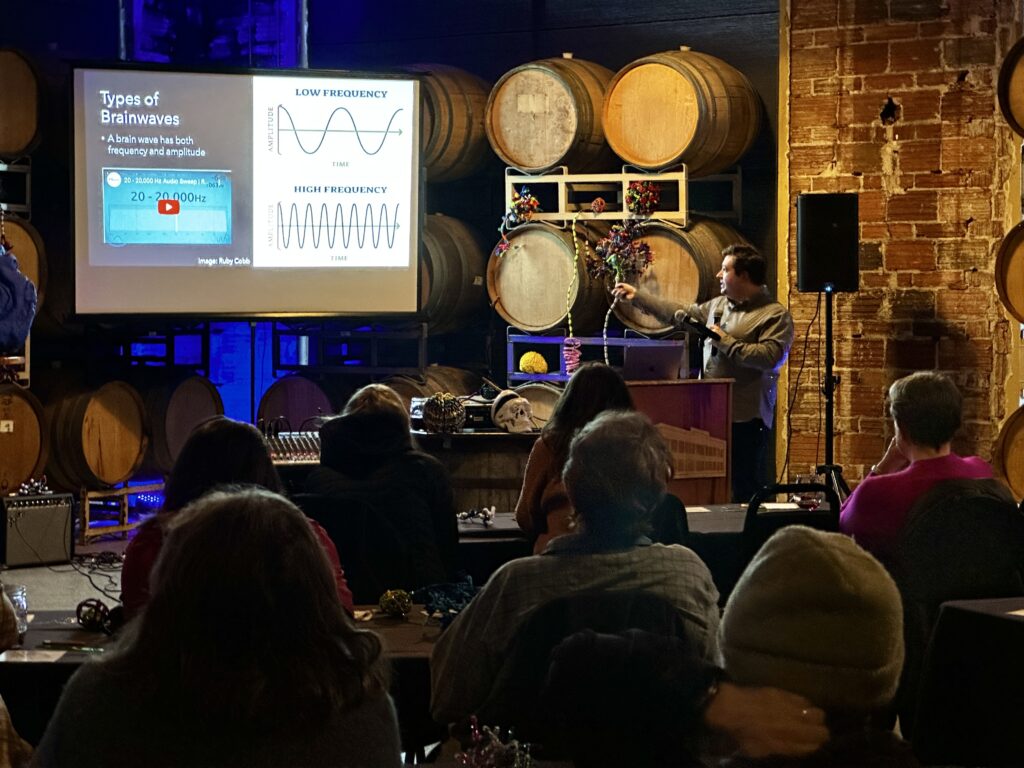
LEARN MORE: Neuronal Oscillations in Cortical Networks
My own research focuses on how we pay attention to signals in our surroundings, and how the high frequency gamma rhythm, around 30 to 50Hz, might be involved.
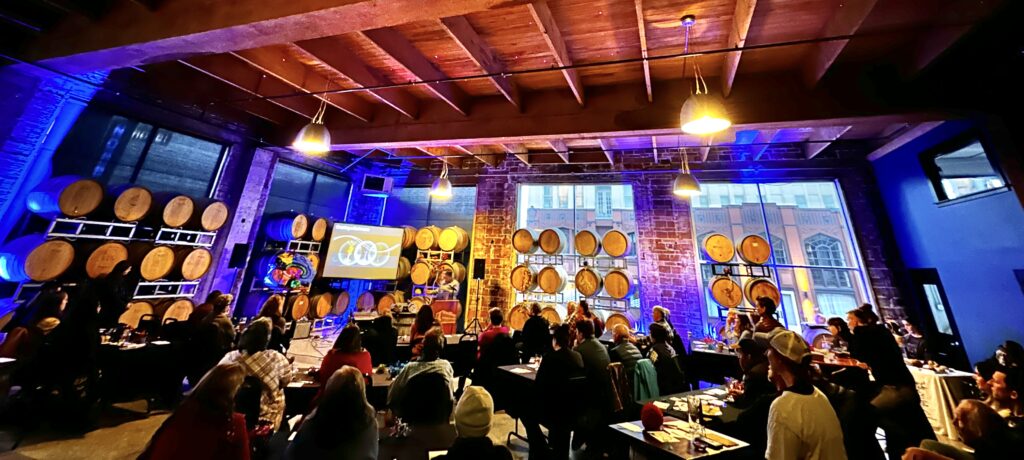
I teach mice an attentional task and record their brain rhythms in two regions we think are highly involved in attentional processing: the claustrum, and the anterior cingulate cortex. I then analyze these brain rhythms during the mouse attentional task to gain insight into how different regions in the brain might interact, synchronize, and communicate.
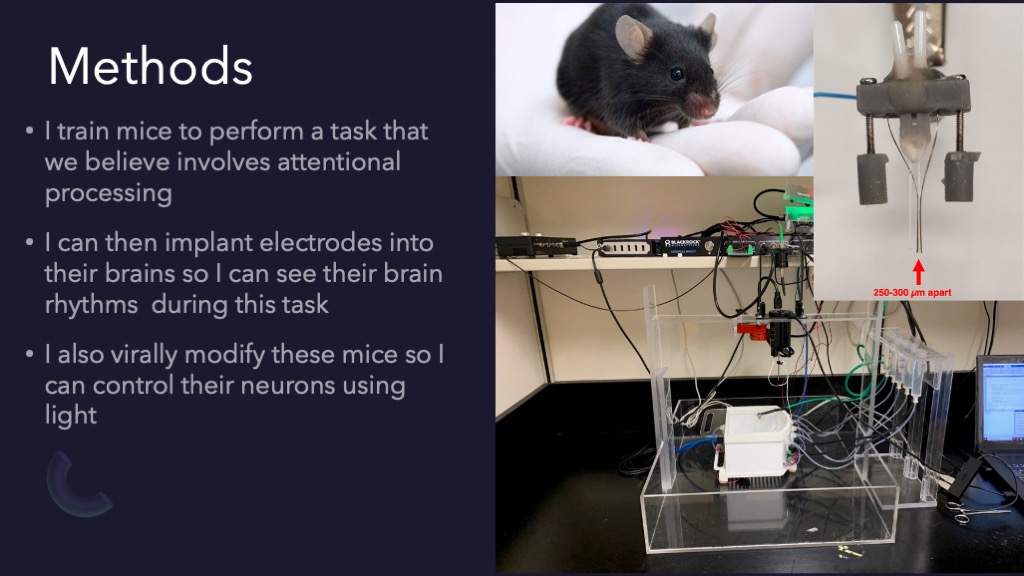
LEARN MORE: Mechanisms of Gamma Oscillations
LEARN MORE: Attention: the claustrum
One of the most intriguing aspects of this research for me is the chance to study the claustrum, a mysterious thin sheet of cells that is nested subcortically (“below” the outer “bark,” or surface cortex) between two large fiber tracts in the human brain.
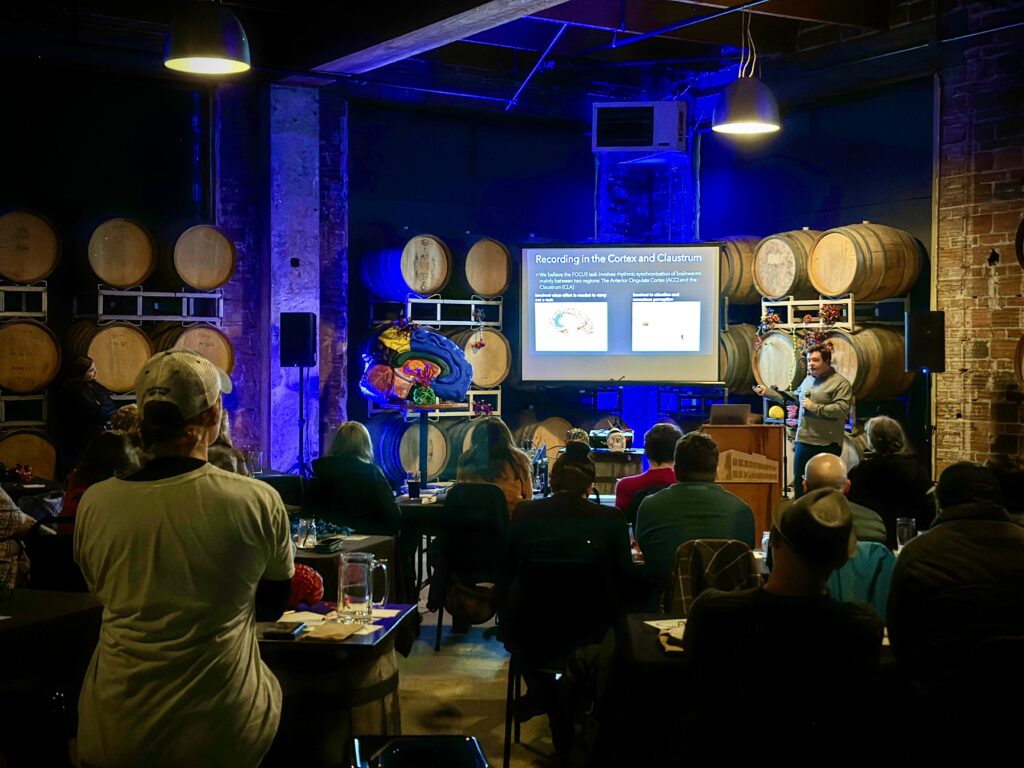
The claustrum is the most interconnected brain region per unit volume!
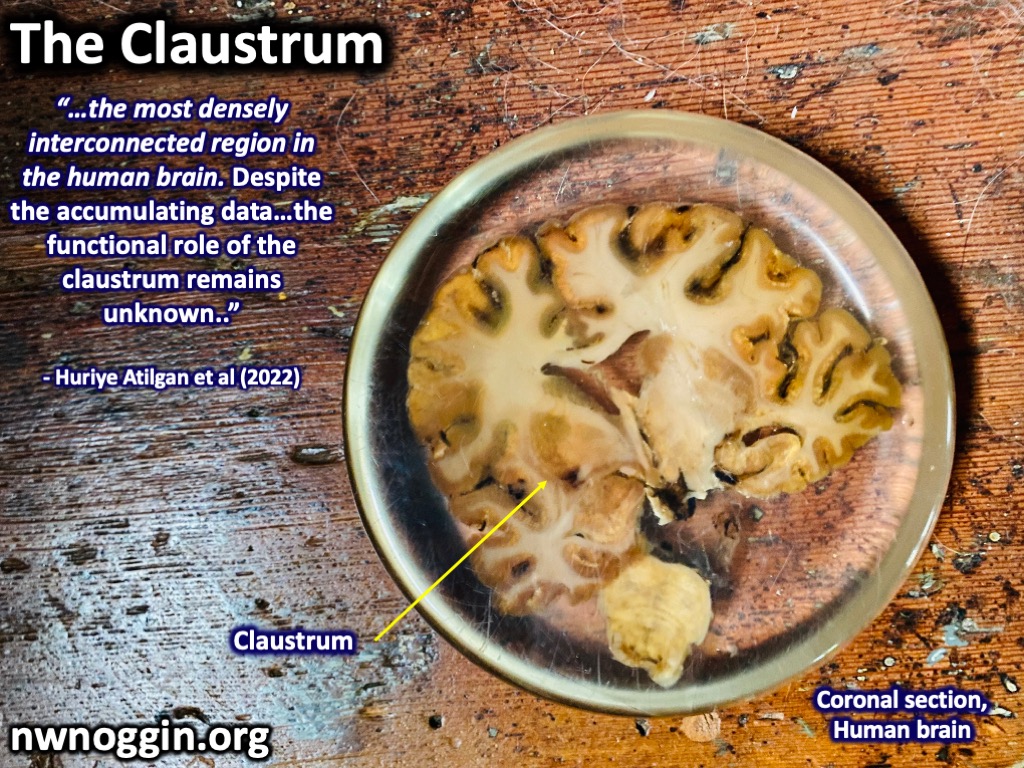
In 2005, Francis Crick (the Nobel Prize winning co-discoverer of the double helical structure of DNA) and Christof Koch (now Chief Scientist of the MindScope Program at the Allen Institute in Seattle) proposed this region as the “seat of consciousness,” with the claustrum perhaps acting as a “cortical conductor.”
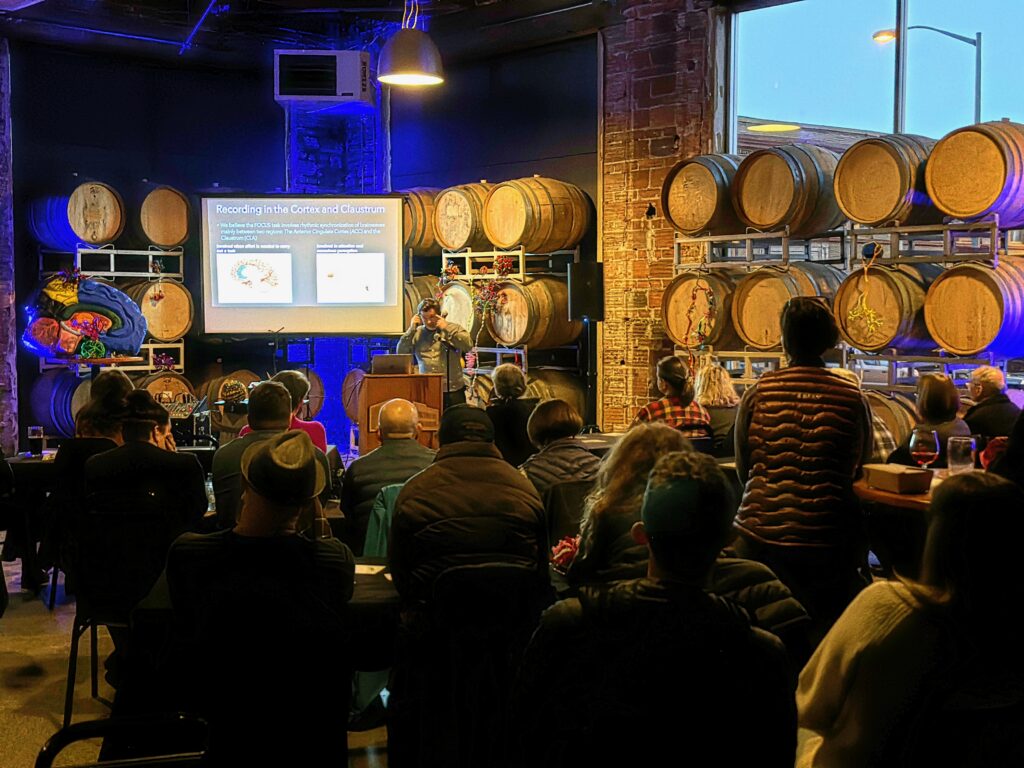
Is the claustrum helping to set our brain rhythms, perhaps serving as a conductor of our conscious experiences? I’m curious whether this may involve synchronization of our brain networks using both high frequency gamma rhythms and low frequency delta rhythms, perhaps led by activity in this highly interconnected region.
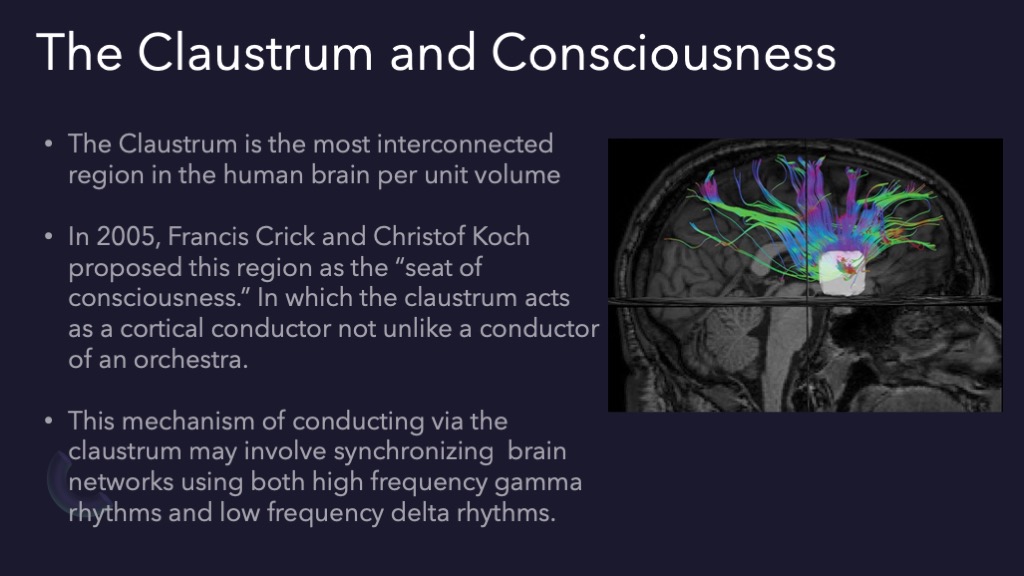
LEARN MORE: What is the function of the claustrum?
LEARN MORE: The DTI connectivity of the human claustrum
LEARN MORE: The claustrum coordinates cortical slow-wave activity
LEARN MORE: Human lesions and animal studies link the claustrum to perception, salience, sleep and pain
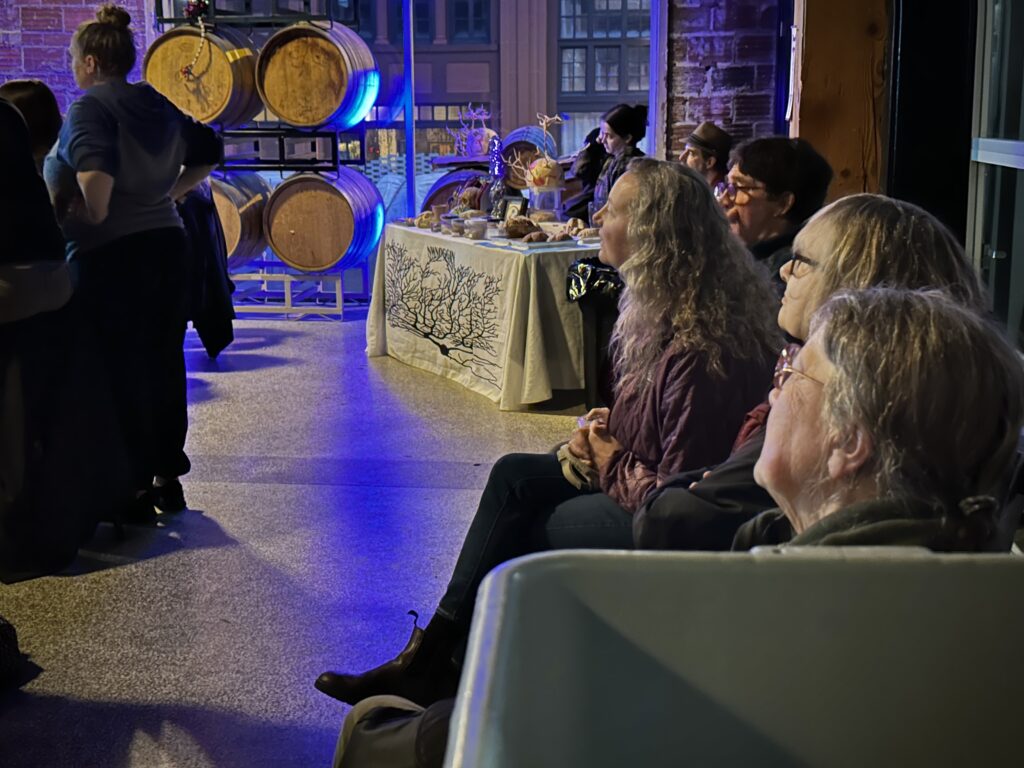
I am excited to continue investigating the enigmatic claustrum and I’m hopeful that viewing how the brain communicates though a more rhythmic lens will expand our knowledge on attention and consciousness itself.
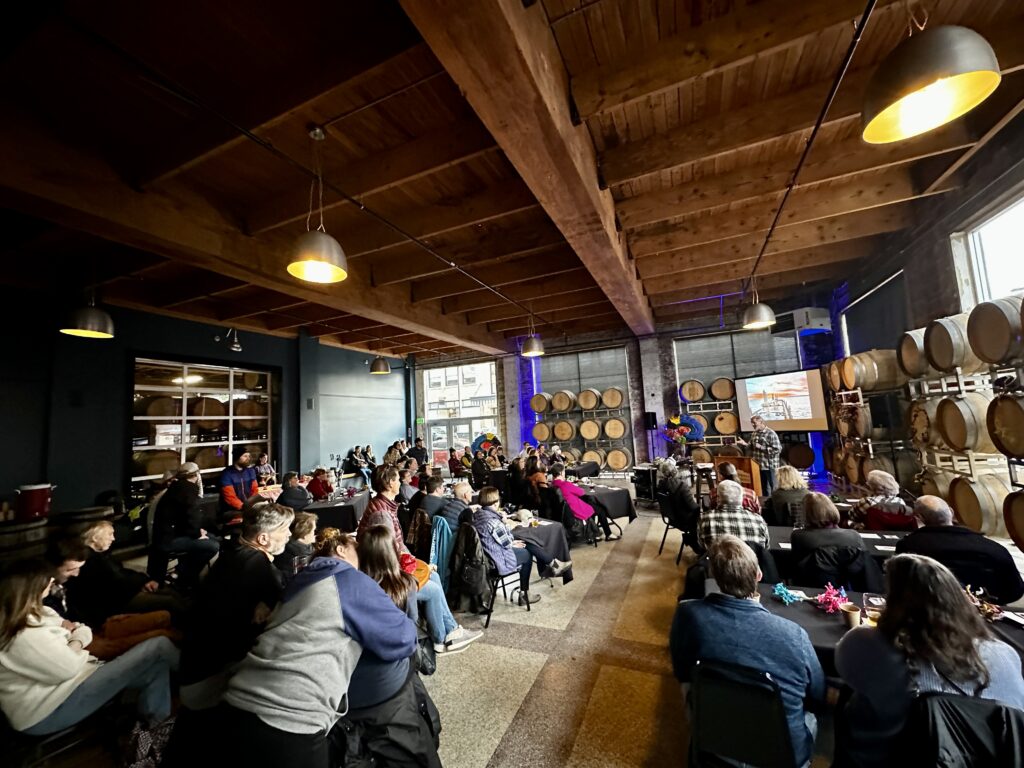
HUGE THANKS to Randall Olson, Tom Hernandez and Mark Hails for sharing their signal expertise and enthusiasm, to Andrea Gonzalez and Meredith Payton for organizing our exceptional venue, to everyone at the Fort George Brewery for hosting our brains and artworks – and to our own extraordinary Northwest Noggin volunteers!

